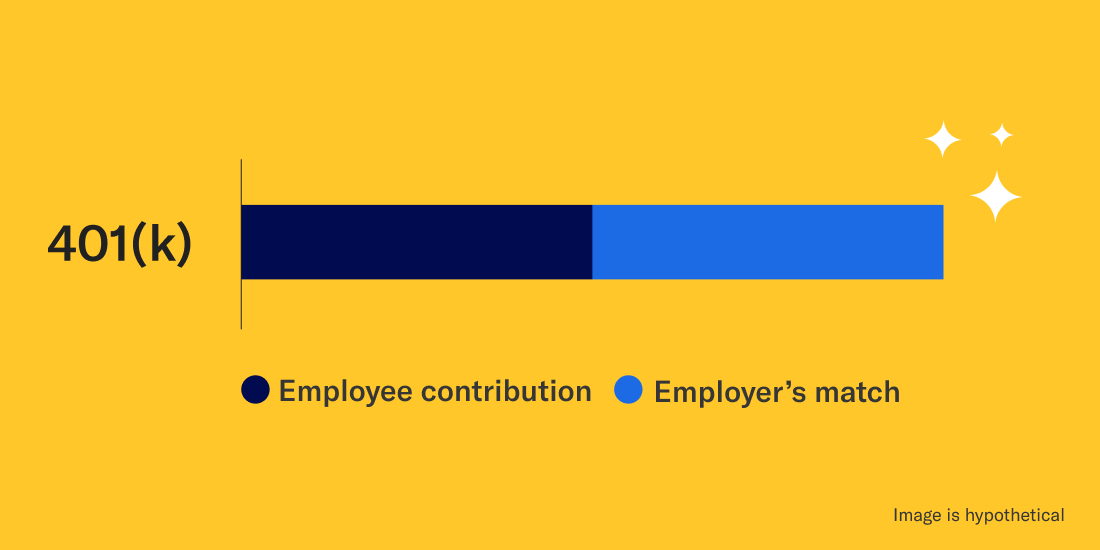The Importance and Benefits of Offering Employer Match
Some employees resist saving because they feel retirement is too far away, can’t afford it, or can’t grasp the benefit. You can help change that mentality by offering a 401(k) employer match.

A 401(k) does more than attract talent—it can spark real savings habits across your workforce. Still, some employees might hesitate, thinking retirement’s too far off or their budget’s too tight. However, as a 401(k) plan sponsor, you can help change that mentality by offering a 401(k) employer matching contribution.
What is a 401(k) employer matching contribution?
With an employer match, a portion or all of an employee’s 401(k) plan contribution will be “matched” by the employer. Common matching formulas include:
Dollar-for-dollar match:
Carla works for ABC Company, which runs payroll on a semi-monthly basis (two times a month = 24 pay periods a year). Her gross pay every period is $2,000. She has decided to defer 4% of her pre-tax pay every pay period, or $80 (4% x $2,000). The ABC Company 401(k) plan generously offers a dollar-for-dollar match up to 4% of compensation deferred. With each payroll, $80 of Carla’s pay goes to her 401(k) account on a pre-tax basis, and ABC Company also makes an $80 matching contribution to Carla’s 401(k) account.
At a 4% contribution rate, Carla is maximizing the employer contribution amount. If she reduces her contribution to 3%, her company matching contribution would also drop to 3%; but if she increases her contribution to 6%, the formula dictates that her employer would only contribute 4%.
Partial match (simple):
Let’s take the same scenario as above, but ABC Company 401(k) plan matches 50% on the first 6% of compensation deferred. This means that it will match half of the 401(k) contributions. If Carla contributes $80 to the 401(k) plan, ABC Company will contribute $40 on top of her contribution as the match.
Tiered match:
By applying different percentages to multiple tiers, employers can encourage employees to contribute to the plan while controlling their costs. For example, ABC Company could match 100% of deferrals up to 3% of compensation and 50% on the next 3% of deferrals. Carla contributes 4% of her pay of $2,000, which is $80 per pay period. Based on their formula, ABC Company will match her dollar-for-dollar on 3% of her contribution ($60 = 3% x $2,000), and 50 cents on the dollar on the last 1% of her contribution for a total matching contribution of $70 or 3.5%.
The plan’s matching formula is chosen by the company and specified in the plan document or may be defined as discretionary, in which case the employer may determine not only whether or not to make a matching contribution in any given year, but also what formula to use.
Is there a limit to how much an employer can match?
The IRS limits annual 401(k) contributions, and these limits change from year to year. It’s also important to note that the IRS caps annual compensation that’s eligible to be matched.
Potential Benefits of Providing an Employer Match
- Attract talent: In Betterment at Work annual Retirement Readiness Report, 57% of employees said better benefits would entice them to switch jobs. The most appealing benefit? An employer match (55%). What’s more, 75% of employees who have a 401(k) also receive an employer match, underlining the rising importance of this benefit in today’s job market.
- Boost 401(k) plan participation: Unlike other types of employer contributions, a matching contribution requires employees to contribute their own money to the plan. In fact, 90% of those with a match contribute enough to receive the match. In other words, the existence of the match drives plan participation up, encouraging employee engagement and increasing the likelihood of having your plan pass certain compliance tests.
- Financial well-being of employees: A matching contribution shows employees that you care about their financial well-being and are willing to make an investment in their future. In fact, 52% of employees said their company showed strong levels of commitment to supporting their financial wellness, compared to just 41% in 2023.
- Improved retention: An employer match is a valuable part of an employee’s total compensation—one that’s hard to walk away from. And by applying a vesting schedule to the employer match, you can incentivize employees to stay longer with your company to gain the full benefits of the 401(k) plan.
- Employer tax deduction: Matching contributions are tax deductible, which means you can deduct them from your company’s income so long as they don’t exceed IRS limits.
Offering a 401(k) plan is already a huge step forward in helping your employees save for their retirement. Providing a 401(k) matching contribution enhances that benefit for both your employees and your organization.
Ready for a better 401(k) solution?
Whether you’re considering a matching contribution or not, Betterment is here to help. We offer an all-in-one dashboard that seeks to simplify plan administration, at one of the lowest costs in the industry., Our dedicated onboarding team, and support staff are here to help you along the way.
